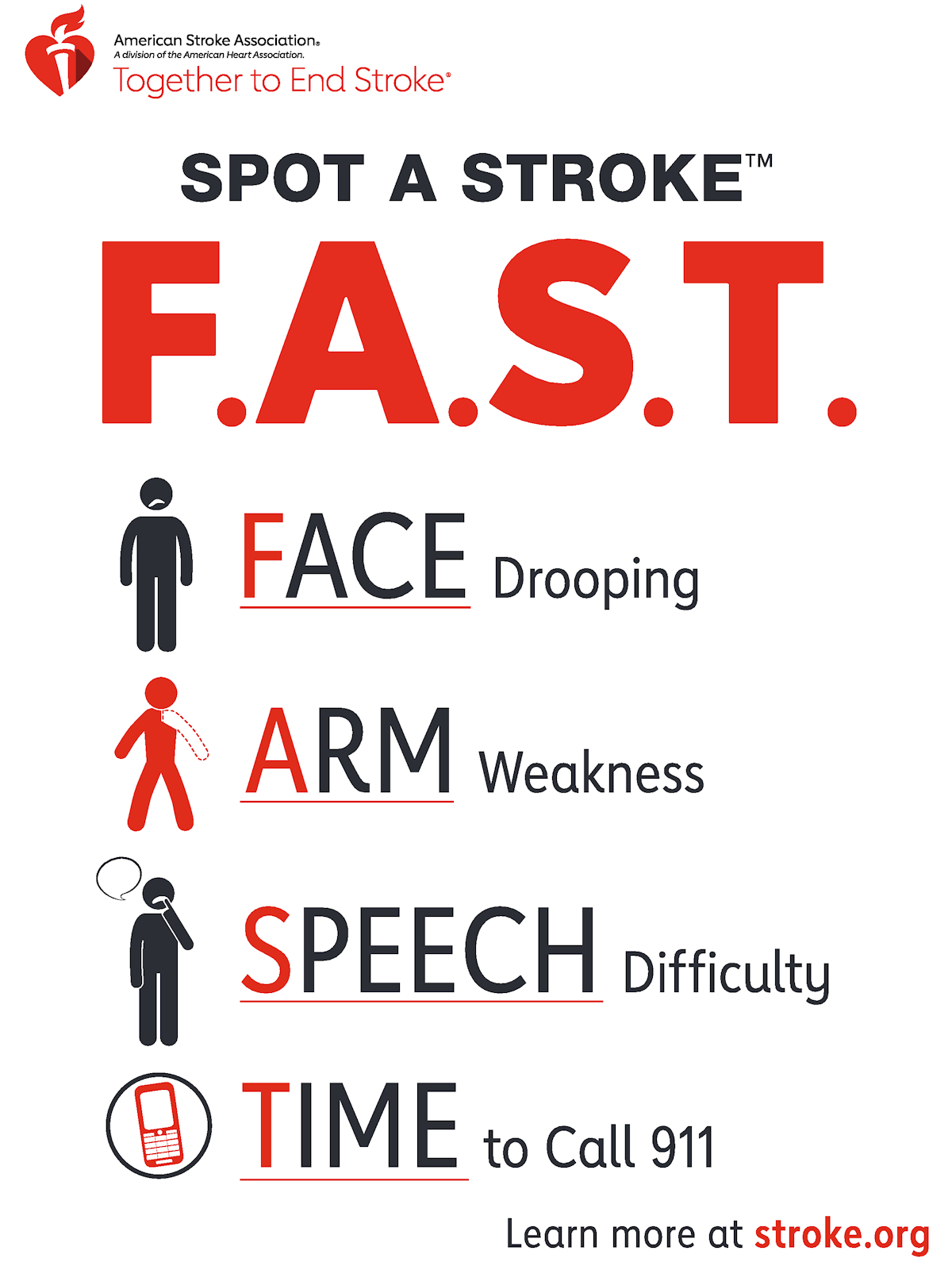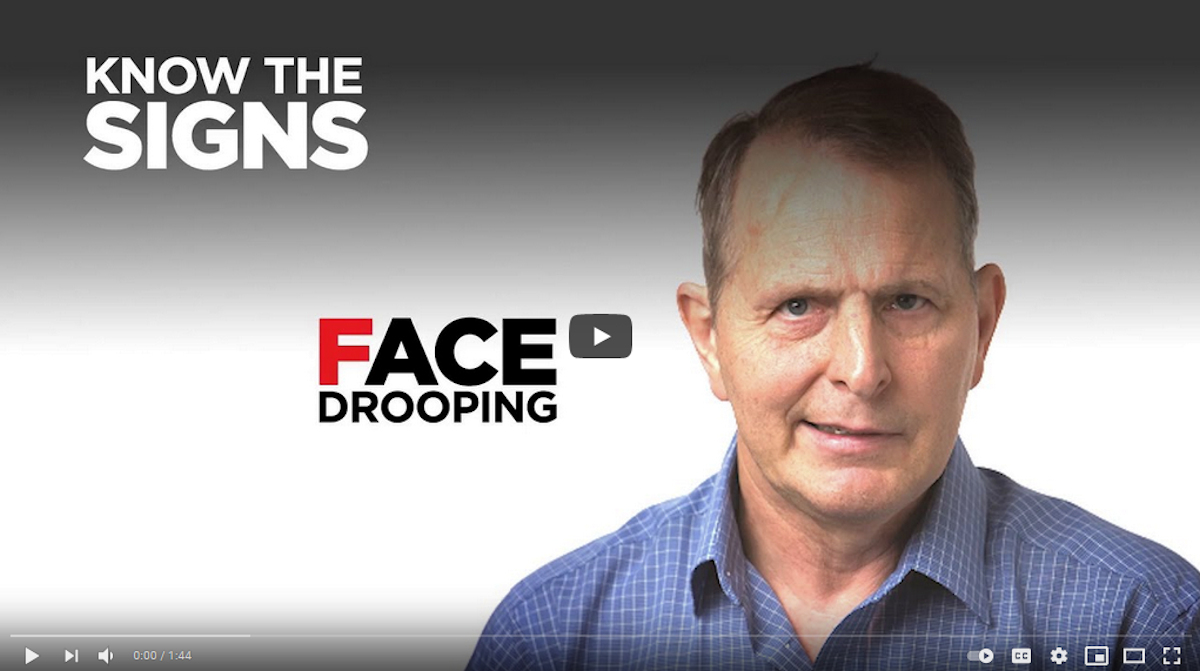Time is critical when someone is having a stroke.
 From the moment the first warning signs of stroke appear to the moment life-saving medicine is administered, every minute matters — and getting the right care as soon as possible makes all the difference.
From the moment the first warning signs of stroke appear to the moment life-saving medicine is administered, every minute matters — and getting the right care as soon as possible makes all the difference.
In most cases, stroke patients have about three hours to receive treatment from the moment the warning signs appear.
The sooner the treatment, the greater the likelihood for a better recovery.
“A stroke is a serious medical emergency that can have devastating results,” said Douglas Stuart, MD, a neurology specialist and the medical director for the stroke care program at Tanner. “When someone has a stroke, the sooner they receive treatment, the better. The longer it goes untreated, the more damage that can occur. Getting treatment fast improves a person’s chance of survival, as well as their chance at a stronger recovery.”
Stroke by the Numbers
Stroke affects nearly 800,000 people across the country every year. On average, every 40 seconds, someone in the U.S. experiences a stroke. And nearly every four minutes, someone dies from one.
Strokes are one of the leading causes of disability and death in the U.S., with more than 140,000 people dying from stroke-related complications every year, according to the American Heart Association/American Stroke Association.
Most strokes occur when a blood clot or a fatty buildup of cholesterol clogs an artery to the brain, or when a blood vessel in the brain bursts, causing hemorrhaging or bleeding on the brain. This cuts off blood flow to the brain.
When the blood flow to the brain stops, brain cells begin to die.
When brain cells die, brain function decreases and can potentially lead to brain damage, disability, paralysis in the face, hands and arms, and death.
Having a stroke can also affect cognitive abilities, such as the brain’s ability to think, remember and control other body functions.
Signs, Symptoms and Treatment
It’s estimated that about 80% of strokes are preventable — and nearly all of them are treatable — especially when the symptoms are detected early.
“The symptoms of a stroke can appear suddenly, sometimes before you realize what’s happening,” said Dr. Stuart. “A person could suddenly have weakness or numbness in their limbs, trouble talking, disorientation, loss of vision or loss of balance. Those are some of the first signs of stroke, and it’s a critical time to take action and seek emergency care.”
The emergency teams at Tanner are always working to decrease their “door-to-needle” time, which is the time from when a patient enters the emergency department showing signs of stroke to when they are evaluated and receive treatment.
Drilling down that time ensures that when a stroke strikes, Tanner’s teams can strike back with rapid treatment, delivering brain-saving, blood clot-busting medication in minutes.
Recognizing the Warning Signs and Acting F.A.S.T.
Many people don’t know how to recognize the signs of a stroke. Knowing how to recognize the warning signs, and knowing what to do, could save someone’s life or help minimize the damage from a stroke.
Remember the signs for a stroke by remembering to act “F.A.S.T.”
F: Face drooping — Ask the person to smile. Is it uneven?
A: Arm weakness or numbness — Ask the person to raise both arms. Does one arm drift down?
S: Speech difficulty or slurred — Ask the person to repeat a simple sentence. Are they unable to repeat it?
T: Time to call 911.
Don’t ignore the warning signs.
The Centers for Disease Control and Prevention (CDC) says that calling 911 at the first symptom of stroke can help you get to the hospital in time for life-saving stroke care. Yet, 1 in 3 stroke patients never calls 911.
Stroke patients who are taken to the hospital in an ambulance may get diagnosed and treated more quickly than people who do not arrive in an ambulance, the CDC states. Calling an ambulance means that medical staff can begin life-saving treatment on the way to the emergency room.

Understanding Your Risk
A stroke can happen to anyone at any age; however, some people are at greater risk than others, especially those who have heart disease or who are at risk for developing it.
“A stroke is sometimes called a ‘brain attack’ because it happens like a heart attack in the brain,” said Dr. Stuart. “Heart disease and stroke are very closely related. Both are often caused by the same health issues and share a lot of the same risk factors, too — like having high blood pressure, high cholesterol and diabetes — so a lot of people who are at risk for heart disease could be at risk for stroke.”
Other factors that can increase the risk for stroke include age, family history, gender (especially among women), being Black, being overweight and using tobacco or alcohol.
Those who have a family member who has previously suffered a stroke, or have experienced one themselves, are also at risk for stroke.
As with all risk factors, some of them can be changed and some cannot. Understanding your risk is the first step to lowering it.
Getting healthier helps, too.
“There are several things that a patient can do to prevent a stroke,” said Dr. Stuart. “The first thing is to take care of yourself. That includes talking with your doctor about your health and any medications you’re taking. Build healthy habits to make sure you’re exercising regularly and eating a balanced diet. Kick the bad habits like tobacco, and if you drink alcohol, do so in moderation.”
Stroke Care at Tanner
The stroke care facilities at Tanner ensure that advanced stroke care is always available.
According to Joseph Bradley, the program manager for Tanner’s stroke care program, having a stroke is a major health problem, affecting not only the patient but the patient’s entire family.
He explained that a stroke can happen to anyone, at any time, no matter what age, race or gender, so having timely care available 24/7 is vital to those living throughout the region.
“A stroke is like a housefire — the sooner you put out the fire, the less damage caused to the house,” said Bradley. “Experiencing a stroke is terrifying for you as the patient, as well as for your loved ones. What happens when you have a stroke depends on many things, such as where the stroke occurred and the type of stroke you experienced. That’s why getting the right care as soon as possible is so critical.”
Tanner’s hospitals in Carrollton, Villa Rica and Bremen are designated stroke care facilities by the American Heart Association/American Stroke Association and The Joint Commission.
These facilities have been recognized for demonstrating the greatest level of commitment to the care of stroke patients, with world-class emergency care, dedicated stroke care teams, comprehensive rehabilitation programs, state-of-the-art telehealth services and more.
Don’t delay stroke care. If you or someone is experiencing symptoms of a stroke, call 911 and immediately seek emergency medical care.
To learn more about the advanced stroke care available at Tanner, visit
tanner.org/stroke.